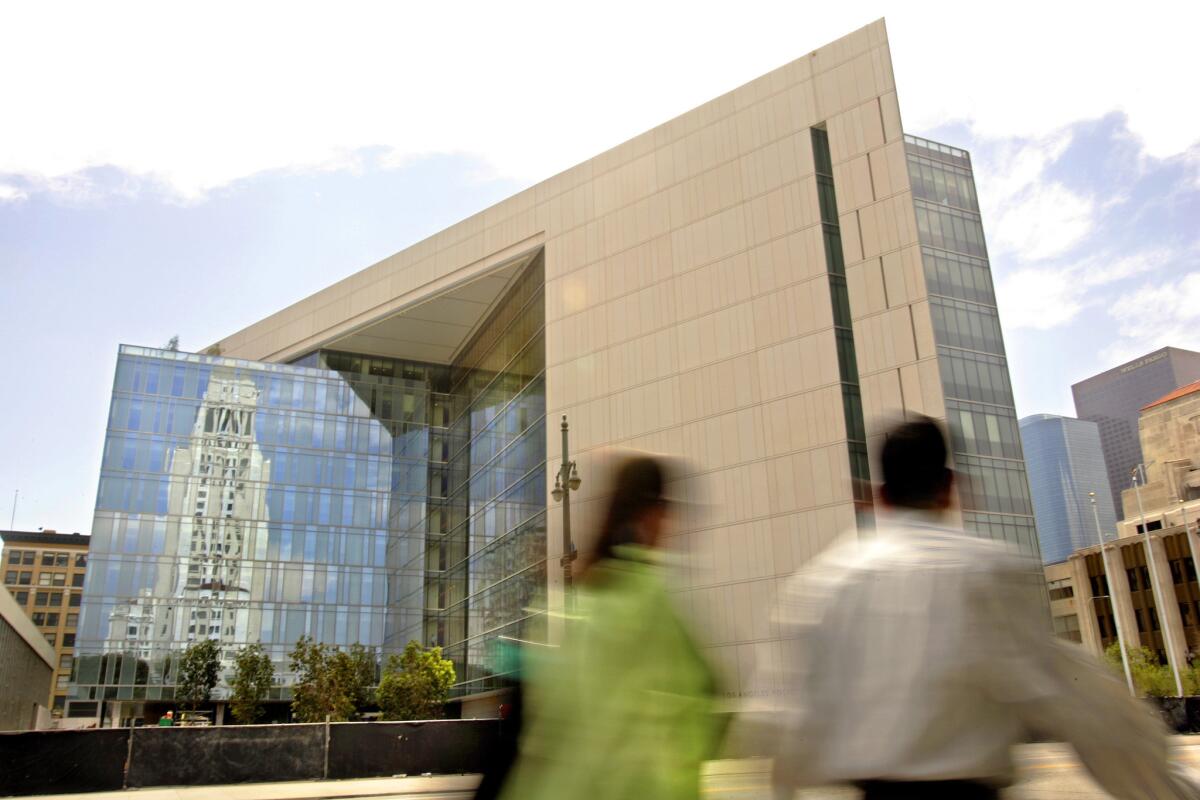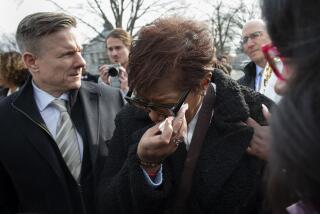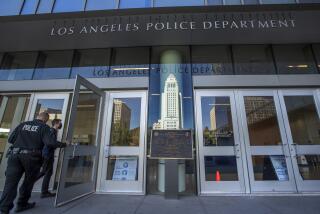L.A. pays $2-million settlement in police killing of man with brain injury

- Share via
Nearly four years after a Los Angeles police officer fatally shot a 26-year-old man with a history of brain injury in his Pacoima driveway, the City Council on Wednesday approved a $2-million settlement with his family, who called authorities because he was exhibiting suicidal behavior.
Christian Eaddy’s shooting in May 2013 was deemed justified by LAPD Chief Charlie Beck, and Dist. Atty. Jackie Lacey declined to prosecute Officer Christopher Carr.
For the record:
8:48 a.m. Jan. 27, 2025An earlier version of this article referred to Christian Eaddy as Christopher Eaddy.
But a Los Angeles County jury in August found the LAPD had acted negligently and violated Eaddy’s civil rights.
The jury awarded $2.2 million in damages but reduced that amount to $1.43 million by finding Eaddy was also at fault, and attributed 35% of the blame to him. Eaddy had suffered a brain injury as a child.
“Litigation it seems is the only way to hold officers and the department accountable. There is very little accountability from [the] district attorney’s office and Police Department,” said John Taylor, the attorney for Eaddy’s family.
The council voted 14 to 0 to approve the settlement, which, including attorneys’ fees, was lower than the trial award. The cost of the payout will be spread over the current and next fiscal year.
Officers were dispatched to Eaddy’s home on the afternoon of May 16, 2013. His cousin called 911 to report that Eaddy was stabbing himself with syringes and was carrying two kitchen knives. The cousin told a dispatcher that Eaddy said he was trying to commit suicide, according to a summary of the incident detailed in a memo by the Los Angeles County district attorney’s office.
Eaddy was known to become aggressive with police, and four other family members were on the driveway watching him, the cousin told the dispatcher.
When officers arrived, they saw Eaddy with the knives walking in circles, scraping the blades together as the family members stood by.
Police issued several orders for Eaddy to get on the ground, but he advanced toward the officers while holding the knives, prosecutors said.
A witness recalled that Eaddy, striking the blades together, told the officers, “I’m not going to hurt nobody.”
Officer Fernando Avila used his stun gun on the young man, and nearly simultaneously Carr fired a single fatal round from about 9 feet away, according to a summary of the incident released by the LAPD in 2014.
Eaddy was shot by police within 40 seconds after the officers arrived, according to attorneys for the family. He died at a hospital.
Taylor said jurors could identify what a reasonable officer would do by comparing the actions of the two officers: One “chose to use less-lethal force, not deadly force.”
Attorneys for the city during the trial had argued that Carr was acting in self-defense and within the bounds of the department’s policies.
Edwin Rathbun, an attorney for the city, had argued that Carr was justified in using deadly force because Eaddy charged at the officers.
The police chief and Los Angeles Police Commission ruled in 2014 that the shooting was justified and within policy. In a Sept. 23, 2014, memo, the district attorney’s office concluded that Carr had a reasonable fear of death or significant injury and “acted lawfully in self-defense and defense of others.”
Taylor said Eaddy could still be alive if the officers showed better judgment. He faulted the officers’ tactical decisions and questioned why they did not wait for several backup units that were en route to the scene.
The lawyer also disputed the narrative offered by police and said Eaddy had placed the two knives in a shopping cart in the driveway before he was shot. The knives were recovered from the shopping cart, he said.
The department had insisted that Eaddy was still holding the knives when the deadly round was fired.
Attorneys for Eaddy’s family contended that the bullet struck Eaddy in a way that showed he turned toward the shopping cart. Thus, he was complying with police commands, the lawyers said.
Twitter: @lacrimes
More to Read
Sign up for Essential California
The most important California stories and recommendations in your inbox every morning.
You may occasionally receive promotional content from the Los Angeles Times.











